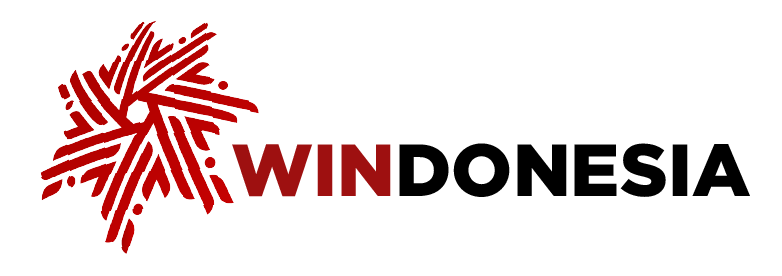Sector
Fishery
Indonesia, boasting the title of the world’s largest archipelagic country with a vast sea area of 5.8 million square kilometers, stands as one of the largest producers and suppliers in the global fisheries market. The abundance of sea area provides Indonesia with a wealth of fisheries products, making fisheries a national leading sector in the country.
View moreFishery
Indonesia, boasting the title of the world’s largest archipelagic country with a vast sea area of 5.8 million square kilometers, stands as one of the largest producers and suppliers in the global fisheries market. The abundance of sea area provides Indonesia with a wealth of fisheries products, making fisheries a national leading sector in the country.
There are 23 regions where fisheries stand out as a leading sector, supporting local economies and providing food security. These regions encompass Aceh, Bengkulu, Riau, Lampung, South Sumatra, Central Java, Bali, West Nusa Tenggara, East Nusa Tenggara, Central Kalimantan, South Kalimantan and North Kalimantan. Other regions include Central Sulawesi, Southeast Sulawesi, South Sulawesi, West Sulawesi, North Sulawesi, Gorontalo, Maluku, North Maluku, Papua, West Papua, and Bangka Belitung.
In 2022, Indonesia’s fisheries sector contributed a total of Rp505 trillion to the country’s gross domestic product (GDP). Building this strong foundation, the country set an ambitious target of reaching US$7.2 billion in fishery exports by the end of 2023. Previously, total fishery product exports had hovered around US$5 billion to US$6 billion.
Supporting the sector’s contribution to the country’s GDP is its production. Throughout the third quarter of 2023, Indonesia’s fisheries production totaled 24.74 million tons. This figure includes both capture fisheries and aquaculture. In aquaculture, the main commodities are seaweed cultivation and shrimp cultivation, while in capture fisheries, the main commodities are tuna, skipjack tuna, and mackerel tuna.
Furthermore, Indonesia’s fisheries sector is experiencing a surge in investment. By the third quarter of 2023, the sector had attracted a total of Rp9.56 trillion in investment, with significant contributions from a mix of domestic sources at Rp5.32 trillion, foreign investors at Rp1.4 trillion, and credit sources at Rp2.84 trillion. Notably, China is the largest foreign investor, contributing Rp370.74 billion, followed by Malaysia with Rp240.4 billion, and Switzerland with Rp152.89 billion, highlighting the increasing international interest in Indonesia’s fisheries potential.
While Indonesia boasts impressive fisheries production and growing investments in its fisheries sector, it is vital to uphold fisheries regulations. These regulations ensure that this valuable sector thrives alongside healthy marine ecosystems. It is reported that Indonesia is scheduled to enforce a new fisheries policy in 2025, which will see quotas assigned to industrial, local, and non-commercial fishers across six designated fishing zones, covering all 11 fisheries management areas (FMAs) in Indonesia. The new quota system responds to a worrying rise in overexploited FMAs, which have increased to 53 percent from 44 percent in 2017.
Latest News
West Papua Governor Dominggus Mandacan met with Chinese Ambassador to Indonesia Wang Lutong at the Chinese Embassy in Jakarta on Nov. 11, 2025. The meeting discussed cooperation in various fields and potential Chinese investment in West Papua. Mandacan was accompanied at the meeting by, among others, West Papua Regional Secretariat Development Administration Bureau Head Onasius P. Matani, West Papua Environmental Office Head Reymond R.H. Yap, and West Papua Liaison Agency Head Erix I.W. Ayatanoy.
The potential cooperation encompasses new and renewable energy, the transition to electric vehicles (EVs), trade expansion, education, culture, tourism, and healthcare. The collaboration on EVs would include EV charging infrastructure, electric buses, and small EVs suitable for Papua. This should be accompanied by training, capacity building, and technology transfer with Chinese EV manufacturers.
The cooperation in trade expansion include strengthening direct export channels to China for fishery products such as tuna, crab, lobster, shrimp, and seaweed; agricultural products such as coconut, coffee, nutmeg, and areca nut; as well as wood and non-timber forest products such as rattan.
In the fields of education, culture, and tourism, cooperation could include providing scholarships and academic partnerships for Papuan students in China, teacher exchanges and training, exploring and establishing the first Confucian Institute in Papua as a center for language and cultural exchange, as well as ecotourism in the Arfak Mountains and the development of Mansinam Island.
In the health care sector, collaboration could be established to improve health human resources through general practitioner and specialist programs, procurement of medical equipment, development of West Papua Provincial Hospitals, as well as provision of floating hospitals in the seven regencies of West Papua.

